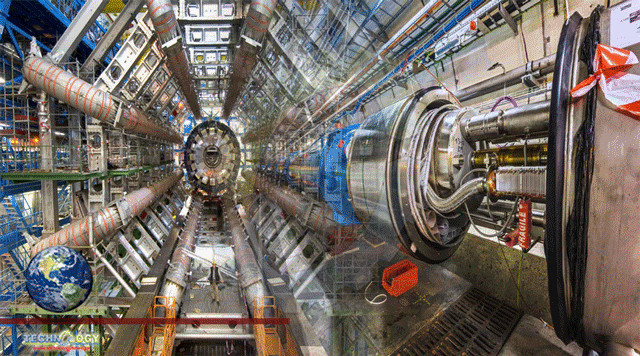The Large Hadron Collider, located under a Swiss-French border area near Geneva, is perhaps best known for helping to confirm the subatomic Higgs boson in 2012.

Beams of protons have spun round the 27km ring of the world’s most powerful particle accelerator for the first time in three years.
The Large Hadron Collider, located under a Swiss-French border area near Geneva, is perhaps best known for helping to confirm the subatomic Higgs boson in 2012.
After planned maintenance and upgrades to let scientists and engineers from around the world make it even more powerful, it has been turned back on and will shortly start another run of cutting-edge physics experiments.
The European Organisation for Nuclear Research, or CERN, said that two beams of protons circulated in opposite directions around the accelerator on Friday, but high-intensity, high-energy collisions are still a couple of months away.
It is the collider’s third run. A first round of experiments took place from 2010 to 2012, and a second from 2015 to 2018. This round is expected to last until 2026.
The head of Cern’s Beams department, Rhodri Jones, said: “These beams circulated at injection energy and contained a relatively small number of protons.
“High-intensity, high-energy collisions are a couple of months away.
“But first beams represent the successful restart of the accelerator after all the hard work of the long shutdown.”
As part of the international effort, UK teams have been involved in helping to improve the performance of each of the LHC’s four main instruments.
The UK’s contributions to the upgrade are worth more than £25 million, funded by the Science and Technology Facilities Council.
Professor Mark Thomson, the executive chairman of the STFC and a particle physicist, said: “The UK continues to enjoy a strong and fruitful relationship with Cern.
“Our scientists and engineers have played pivotal roles in contributing to the major upgrades, paving the way for exciting UK-led research on the more powerful beams at the LHC.
“It will never cease to impress me how our scientists and engineers, with their incredible skill and expertise, can continue to improve these cutting-edge facilities using evermore innovative technologies.
“The global science community will now eagerly await the results from the new run, which will probe some of the recent hints of new physics seen at the LHC and elsewhere.”
While pilot beams circulated in the LHC for a short time in October 2021, the beams that circulated on Friday mark not only the end of the second long shutdown for the LHC, but also the beginning of preparations for four years of physics data taking, which is expected to start this summer.
This third run of the LHC will see the machine’s experiments collecting data from collisions not only at a record energy but also in unparalleled numbers.
Meanwhile, thanks to a major upgrade, Alice — a specialised detector for studying heavy-ion collisions — can expect a 50-times increase in the total number of recorded ion collisions.
The unprecedented number of collisions will allow international teams of physicists at Cern and across the world to study the Higgs boson in great detail and put the standard model of particle physics and its various extensions to the most stringent tests yet.
This news was originally published by The National News.